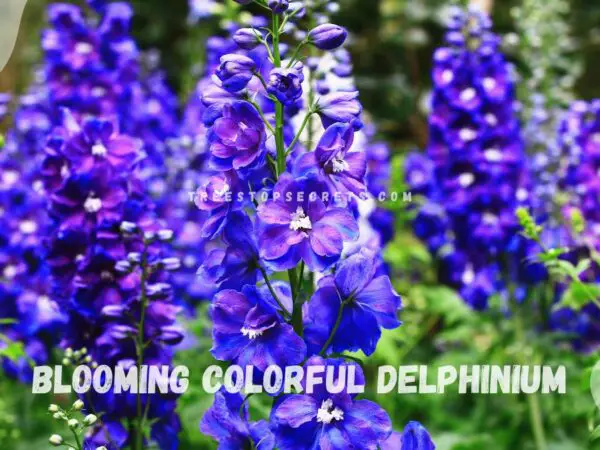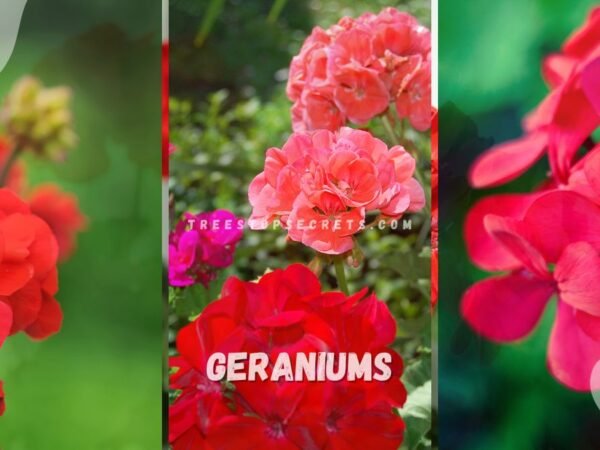Did you know that the tulip poplar tree, despite its name, isn't related to tulips at all? This fascinating tree, also known as Liriodendron tulipifera, belongs to the magnolia family and can grow up to an astonishing 190 feet tall. Recognizable by its distinctive yellow-green flowers resembling tulips, this majestic tree boasts diverse uses in industries like furniture making and construction due to its durable wood. Native to Eastern North America, the tulip poplar tree plays a vital role in ecosystems by providing shelter and food for various wildlife species.
Key Takeaways
-
Identifying Tulip Poplar Trees: Look for the distinctive features like unique leaf shape, tulip-like flowers, and height to identify a tulip poplar tree in your surroundings.
-
Plant Care and Cultivation: Ensure proper sunlight, soil conditions, and watering for healthy growth of tulip poplar trees in your garden or landscape.
-
Uses in Landscaping and Ecology: Utilize tulip poplar trees for shade, ornamental value, and their ecological benefits like attracting pollinators and providing habitat for wildlife.
-
Pests and Diseases: Be vigilant for common pests like aphids and diseases such as verticillium wilt that can affect tulip poplar trees, and take preventive measures promptly.
-
The Significance of Tennessee's State Tree: Understand the cultural and environmental importance of the tulip poplar tree as Tennessee's state tree, symbolizing strength and resilience in the region.
Identifying Tulip Poplar Trees
Leaf Characteristics
Tulip poplar trees are recognized by their large leaves with a unique tulip-like shape. These bright green leaves have four lobes and a flat base, making them easy to distinguish from other tree species. The distinct characteristics of the leaves make identifying tulip poplar trees quite straightforward.
The bright green color and specific leaf shape help in quickly spotting these trees amidst other foliage. For those unfamiliar with tulip poplars, observing the size and shape of the leaves can provide valuable clues for accurate identification.
Flower Features
One of the most striking features of tulip poplar trees is their beautiful flowers that resemble actual tulips. The yellow-green flowers with orange markings are vibrant and eye-catching when in bloom. Each flower boasts six petals and can grow up to 2 inches across, adding to the tree's allure during flowering season.
When walking through an area with various trees, spotting these distinctive flowers can lead you straight to a majestic tulip poplar tree standing tall among its counterparts. Recognizing these unique flower features makes it easier to appreciate the beauty they bring to their surroundings.
Bark Texture
The bark of a tulip poplar tree undergoes changes as it matures, starting off smooth and grayish-brown before developing deep furrows over time. Younger trees display smoother bark compared to older ones where the texture becomes more pronounced due to aging processes.
Observing both young and mature specimens allows for a better understanding of how bark textures evolve over time within this particular species.
Tulip Poplar vs. Poplar Tree
The leaves of a tulip poplar tree are alternate, growing on different sides of the stem. They measure about 6 to 8 inches long and wide. The upper leaf surface is shiny, while the lower one is pale green.
When you look at a tulip poplar tree, notice how its leaves grow differently along the stem. Each leaf has a distinct size and shape, with a glossy top side that catches the sunlight. These unique features can help you identify this type of tree in your area.
- Leaves are alternate
- Measure 6 to 8 inches long and wide
- Upper surface is shiny
Young tulip poplar trees have smooth, light gray bark that changes as they mature. Older trees develop deep furrows and ridges on their bark, giving them a rugged appearance. Although each tree's bark texture may vary slightly, these characteristics remain consistent.
As you explore nature trails or parks, pay attention to the bark of different trees around you. Look for smooth light gray bark in younger tulip poplars and compare it to older ones with rougher textures. This comparison can help you distinguish between various types of trees more easily.
Native Habitat and Distribution
Geographic Location
Tulip poplar trees, also known as native trees, are primarily found in eastern North America. Ranging from southern Ontario to Florida and extending westward to Louisiana, these trees have a broad distribution across the region. They exhibit adaptability to various climates and soil types, showcasing their resilience in different environments.
These species of trees can thrive in diverse conditions, making them a common sight from northern regions down to the southeastern United States. Their ability to flourish in locations with varying temperatures and soil compositions highlights their versatility as native trees. From cooler areas like Ontario to warmer climates such as Florida, tulip poplar trees demonstrate their robust nature throughout eastern North America.
Habitat Preferences
Tulip poplar trees show a preference for well-drained soils that provide optimal growing conditions for them. Typically found in forests, woodlands, and along streams, these species of trees tend to gravitate towards areas with ample sunlight and access to water sources. Their presence enriches ecosystems by offering shelter and sustenance for various wildlife species.
In addition to thriving in forests and woodlands, tulip poplar trees can withstand both acidic and alkaline soils without compromising their growth or health. This adaptability allows them to establish themselves successfully across a range of habitats within eastern North America's landscape. Whether nestled among other tree varieties or standing tall along riverbanks, these native species contribute significantly to the biodiversity of their surroundings.
Plant Care and Cultivation
Soil Requirements
Tulip poplar trees, also known as tulip trees, flourish in fertile and loamy soils. These trees prefer soils with a slightly acidic to neutral pH level for optimal growth. Good drainage is crucial for their health and development.
When planting tulip poplar trees, it is essential to ensure that the soil provides the necessary nutrients and texture for them to thrive. Loamy soils offer a balanced mix of sand, silt, and clay that allows for proper root development. By choosing a location with fertile soil and adequate drainage, you can create an ideal environment for these majestic trees to grow.
- Pros:
- Fertile soil promotes healthy growth
- Loamy texture supports root development
- Cons:
- Unsuitable pH levels can hinder growth
Watering Needs
Established tulip poplar trees have moderate water requirements once they have taken root in the ground. These resilient trees can withstand short periods of drought; however, providing adequate watering during dry spells is crucial for promoting optimal growth.
Ensuring that your tulip poplar tree receives sufficient water is key to its overall health and vitality. During dry periods or hot weather conditions, regular watering will help maintain moisture levels in the soil around the tree's roots. This practice supports steady growth and ensures that your tree remains healthy throughout the seasons.
Pests and Diseases
Common Pests
Aphids are tiny insects that can harm tulip poplar trees by causing the leaves to curl and producing a sticky substance called honeydew. Scale insects are another threat, leading to yellowed leaves and stunted growth. Caterpillars like the tulip tree silkmoth caterpillar can eat away at the tree's foliage if left unchecked.
When aphids invade, they weaken the tree by sucking sap from its leaves. This weakens the overall health of the tree, making it more susceptible to other pests and diseases. Scale insects, on the other hand, create a shield-like protective covering over themselves while feeding on plant juices.
- Aphids cause leaf curling and produce honeydew.
- Scale insects result in yellowing leaves and stunted growth.
- Caterpillars like silkmoth caterpillars defoliate tulip poplar trees.
Disease Challenges
Tulip poplar trees face various fungal diseases that can threaten their health. Verticillium wilt is one such disease that affects these trees, leading to wilting of branches due to restricted water flow caused by a fungus. Leaf spot is another common issue seen in tulip poplars where dark spots appear on foliage.
Canker diseases pose a significant risk as they can lead to branch dieback and damage bark tissues severely. By practicing proper sanitation measures like removing infected plant parts promptly, gardeners can prevent disease outbreaks effectively through regular inspections for any signs of infection.
- Tulip poplars are vulnerable to verticillium wilt.
- Leaf spot manifests as dark spots on their foliage.
- Canker diseases may cause severe branch dieback.
Uses in Landscaping and Ecology
Landscape Design
Tulip poplar trees are popular choices for landscaping due to their ability to provide ample shade in large areas. Their vibrant flowers not only enhance the aesthetics of gardens and parks but also attract pollinators like bees, butterflies, and hummingbirds. When planting tulip poplar trees, it is crucial to allocate sufficient space for them to grow properly given their substantial size.
-
Pros:
-
Excellent shade trees
-
Attractive flowers for gardens
-
Beneficial for pollinators
-
Cons:
-
Require ample space
-
Can be challenging to maintain due to size
Ecological Role
In ecosystems, tulip poplar trees play a vital ecological role by serving as habitats and food sources for various wildlife species. The nectar-rich flowers of these trees are a magnet for bees, butterflies, and hummingbirds, contributing significantly to local biodiversity. The seeds produced by tulip poplars serve as essential food sources for birds and small mammals.
- Key Points:
- Provide habitat for wildlife
- Nectar-rich flowers attract pollinators
- Seeds are food sources for birds and small mammals
Wood and Honey Uses
Wood Characteristics
Tulip poplar wood is lightweight, making it easy to handle. It's soft and simple to work with, often used in furniture crafting. The wood's pale yellow hue is occasionally adorned with green or purple streaks, adding a unique touch. Cabinetry and interior trim benefit from the versatility of tulip poplar wood.
The pros of using tulip poplar wood include its lightness for ease of use and its attractive color variations enhancing aesthetics. On the other hand, one con might be its softness, which could lead to easier dents or scratches.
-
Pros:
-
Lightweight
-
Attractive color variations
-
Cons:
-
Soft texture
Honey Production Tulip poplar trees are a boon for honey production due to their abundant nectar supply. This makes them highly valuable for beekeepers seeking premium-quality honey varieties. Bees diligently collect nectar from the tree's blossoms, resulting in distinct-tasting tulip poplar honey that stands out among different types of honey available.
Tulip poplars offer significant advantages like high nectar yield contributing to increased honey output. However, there might be challenges such as competition from other floral sources impacting overall harvest amounts.
-
Advantages:
-
High nectar yield
-
Disadvantages:
Cultivars and Varieties
Notable Cultivars
Tulip poplar trees have various cultivars that offer unique characteristics. For instance, the 'Fastigiatum' cultivar is known for its tall, narrow shape, resembling a column. On the other hand, the 'Arnold' variety stands out due to its larger leaves and compact growth pattern. Another popular option is the 'J.C. McDaniel,' which boasts variegated foliage with creamy white edges.
Each has distinct features that cater to different preferences or landscaping needs. The 'Fastigiatum' ecotype's slender form makes it ideal for limited spaces or as a vertical accent in gardens. In contrast, the 'Arnold' type's compact size suits smaller yards while still providing the iconic tulip-like flowers and vibrant fall foliage.
The Significance of Tennessee's State Tree
Historical Importance
Tulip poplar trees have a rich historical significance in American history. Native Americans relied on these trees for constructing canoes and shelters. The wood from tulip poplars played a crucial role in early American shipbuilding efforts.
The utilization of tulip poplar wood by Native Americans showcases the tree's versatility and durability. Its lightweight yet sturdy nature made it an ideal material for various purposes, contributing significantly to the daily lives and survival of indigenous communities across America.
Cultural Significance
Beyond its practical uses, tulip poplar trees hold immense cultural importance. These majestic trees are not only recognized as the state tree of Indiana, Kentucky, and Tennessee but also revered among various Native American tribes for their symbolic value.
As a symbol of conservation efforts, tulip poplar trees represent more than just flora; they embody resilience, beauty, and harmony with nature. Their presence serves as a reminder of our connection to the environment and the need to protect and preserve such vital elements for future generations.
You've now explored the fascinating world of tulip poplar trees, from identifying them to understanding their significance. You've learned about their native habitats, care tips, and even their uses in landscaping and beyond. Tennessee's state tree holds a wealth of benefits for ecosystems and humans alike.
So, next time you spot a majestic tulip poplar tree, remember its value and the beauty it adds to nature. Consider planting one in your own yard or community to contribute to the environment positively. Embrace these incredible trees and spread the word about their importance in our ecosystem!
Frequently Asked Questions
What are the key features to identify a Tulip Poplar tree?
Tulip poplar trees can be identified by their distinctive tulip-shaped leaves and vibrant yellow flowers with orange markings. They have straight trunks and smooth bark, reaching heights of up to 100 feet.
How do Tulip Poplars differ from other types of poplar trees?
Tulip poplars, also known as yellow poplars, are different from other poplar species due to their unique leaf shape resembling tulips and their striking yellow-green flowers. Their wood is valuable for various uses like furniture-making.
Where are Tulip Poplar trees commonly found in terms of native habitats and distribution?
Tulip Poplar trees are native to eastern North America, primarily growing in forests from Southern Ontario down to Florida and westward to Texas. They thrive in well-drained soils and prefer full sun or partial shade.
What care tips should I follow when cultivating a Tulip Poplar tree?
When planting a Tulip Poplar tree, ensure it has enough space for its roots to spread out. Provide regular watering during dry spells and protect young saplings from strong winds. Prune dead branches for optimal growth.
Are there any common pests or diseases that affect Tulip Poplar trees?
Tulip Poplars can be susceptible to aphids, scale insects, weevils, and fungal diseases like verticillium wilt or cankers. Regular inspection of leaves for signs of infestation or disease is essential for early detection and treatment.
Image Source: Paid image from CANVA





